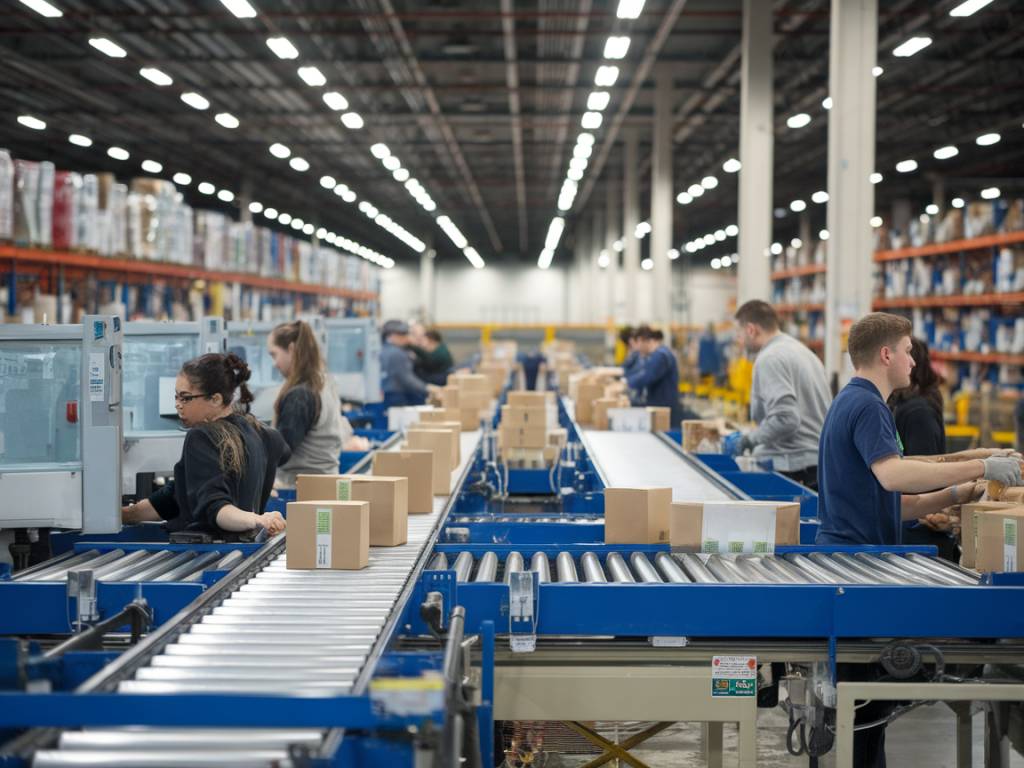In the increasingly competitive field of logistics and supply chain management, the introduction of Autonomous Mobile Robots (AMRs) has become a game-changer. These versatile robots enhance warehouse productivity by automating routine tasks, thus allowing human operators to focus on more complex and value-adding activities. In this article, we delve into the benefits, operational capabilities, and future perspectives of AMRs in logistics.
What Are Autonomous Mobile Robots (AMRs)?
Autonomous Mobile Robots (AMRs) are robots designed to navigate and perform tasks within their environment without direct human intervention. They are equipped with advanced sensors, artificial intelligence, and machine learning algorithms that enable them to understand their environment and make decisions in real-time.
Benefits of AMRs in Logistics
Incorporating AMRs into logistics operations offers a multitude of benefits that significantly enhance warehouse productivity and efficiency:
- Increased Productivity: AMRs can operate 24/7, thus increasing the overall throughput of a warehouse. They can also carry out repetitive tasks with consistent speed and precision.
- Cost Efficiency: Although the initial investment might be high, AMRs reduce labor costs in the long run. They also minimize errors, leading to cost savings due to reduced rework and returns.
- Flexibility: AMRs can be quickly adapted to different tasks and can navigate dynamic environments without requiring significant changes to existing infrastructure.
- Improved Safety: By taking over tasks that can be dangerous or physically straining for human employees, AMRs contribute to a safer working environment.
- Scalability: As business needs grow, additional AMRs can be introduced into the system without substantial changes to the current setup.
Types of AMRs in Warehousing
Different types of AMRs serve various functions in the warehousing and logistics sector:
- Goods-to-Person (G2P) Robots: These robots transport items directly to the picking station, reducing the need for human workers to travel around the warehouse.
- Sorting Robots: These robots are used for sorting items according to predefined criteria. They can efficiently handle small parcels and packages.
- Pallet Movers: These AMRs are specifically designed to move pallets from one location to another, often working in tandem with other automated equipment.
- Inventory Robots: These AMRs scan shelves to conduct inventory checks, ensuring accurate stock levels and decreasing the likelihood of stockouts or overstocking.
Operational Capabilities of AMRs
AMRs are equipped with various technologies that enhance their operational capabilities:
- Navigation Systems: AMRs use LIDAR, cameras, and ultrasonic sensors to sense their environment and navigate seamlessly. They can map the warehouse layout and identify obstacles in real-time.
- Machine Learning: AMRs employ machine learning algorithms to optimize their performance over time. They can predict high-traffic areas and adjust their routes dynamically.
- Interoperability: AMRs can integrate with Warehouse Management Systems (WMS) and other logistics software, allowing for synchronized operations.
- Battery Management: Advanced battery management systems ensure that AMRs have long operational hours with minimal downtime for recharging. Some models even feature automatic docking and recharging capabilities.
Challenges and Considerations
While AMRs offer numerous benefits, their adoption in logistics also comes with certain challenges:
- Initial Investment: The cost of purchasing and implementing AMRs can be a significant barrier for smaller enterprises.
- Maintenance: Regular maintenance and software updates are required to keep the AMRs operating efficiently, necessitating additional costs and expertise.
- Workforce Integration: AMRs must be integrated into the existing workforce, which may involve training staff to work alongside robots.
- Cybersecurity: As AMRs are connected devices, they are susceptible to cyberattacks. Robust cybersecurity measures must be in place to protect the system.
Case Studies
Several companies have successfully integrated AMRs into their logistics operations, yielding impressive results:
- Amazon: Amazon’s robotic fleet, often recognized as Kiva robots, has dramatically transformed their fulfillment centers. They have reduced the time to find and deliver items, significantly improving Amazon’s delivery efficiency.
- Zara: The fashion giant uses AMRs in their distribution centers to streamline the sorting and shipping process, ensuring timely delivery of their products worldwide.
- Ocado: This online supermarket employs a sophisticated system of AMRs to manage their automated warehouses, achieving rapid order fulfillment and accuracy.
Future Perspectives
As technology advances, the capabilities of AMRs are expected to grow even further:
- AI and Advanced Analytics: Integration with advanced AI and analytics will enable AMRs to make more informed decisions, improving operational efficiency and predictive maintenance.
- 5G Connectivity: The adoption of 5G will enhance data transfer speeds, allowing for real-time communication and better coordination among AMRs.
- Enhanced Human-Robot Collaboration: Future AMRs will likely feature more sophisticated interfaces for improved collaboration with human workers, further optimizing warehouse workflows.
The implementation of Autonomous Mobile Robots in logistics is revolutionizing warehouse operations. With significant benefits like increased productivity, cost efficiency, and improved safety, AMRs are set to become integral to modern logistics. Companies investing in this technology today are likely to gain a competitive edge in the future.
Summary: This article explores the profound impact of Autonomous Mobile Robots (AMRs) in logistics, highlighting their benefits, operational capabilities, and future outlook. From increased productivity to better safety, AMRs are transforming warehouse operations, making them indispensable for companies aiming to stay competitive in the dynamic logistics sector.
